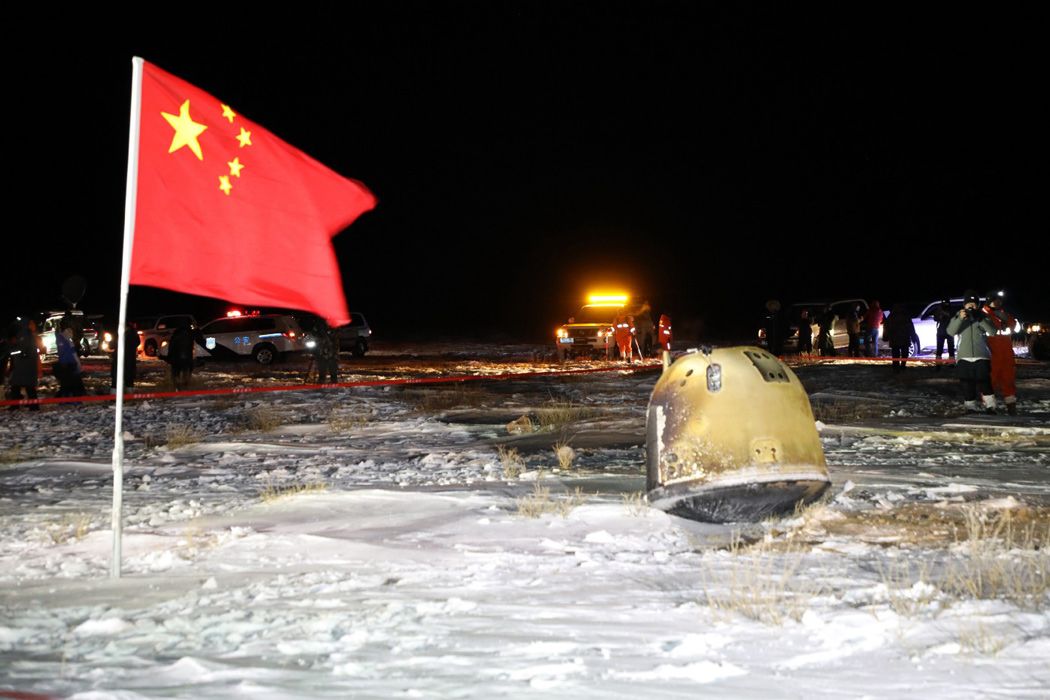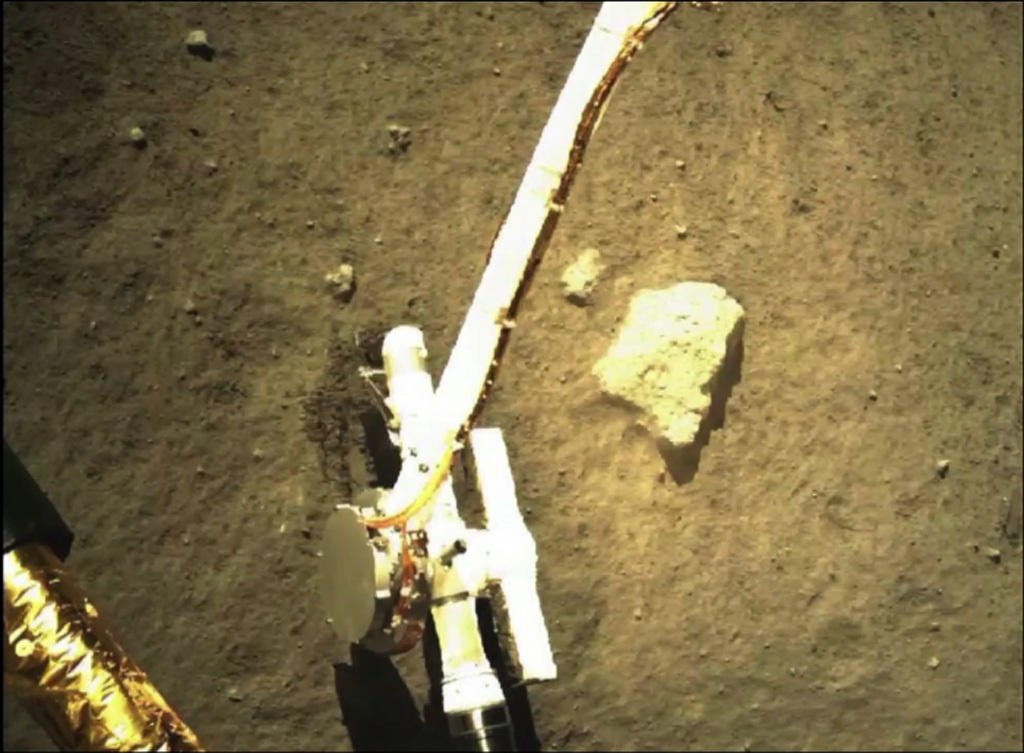An analysis of basaltic lava rocks returned from the Moon by China’s Chang’e-5 mission reveals volcanism only two billion years ago.

Last week, we talked about some early results from the analysis of lunar samples brought back by China’s Chang’e-5 mission which revealed that about 10% of those rocks were not from the landing site in Oceanus Procellarum. That landing site is basically known to be solidified lava near an ancient volcanic eruption. But while those so-called exotic rocks are interesting, today we’re going to talk about the ones that actually originated in the landing site instead.
In a new paper published in the journal Science, researchers report that the basaltic lava found in Oceanus Procellarum is only two billion years old. Yes, that’s billion with a ‘B’, and yes, the usage of “only” is correct here. We know the Moon is the same age as the Earth. We think we understand how it formed and how it ended up in Earth’s orbit, although the details keep being refined as we learn more. So while we can say with some certainty that Earth was hit by a Mars-sized body we call Theia, at least once, shearing off Earth’s materials and mixing together to solidify into the Moon and part of Earth, all of that still happened about four and half billion years ago.
The volcanic history of the Moon goes all the way back to 4.2 billion years ago, and previous data suggests that the bulk of the eruptions occurred between 3.8 and 3 billion years ago. The eruptions consisted mostly of basaltic lava flows from fissure vents, similar to what we have seen in Hawai’i, Iceland, and La Palma. The lava was incredibly primitive, without a lot of prior crystallization, so it flowed quickly and smoothly, resulting in the dark, flat mare or seas we see on the surface of the Moon today.
Two billion years ago is pretty close in time comparatively.

Now, these are not the first lunar rocks brought back from the Moon and analyzed. They are, however, the youngest ones brought back. And that leads to some interesting questions, such as what was the source that provided the heat to make the lava molten? Scientists have found no evidence of the high concentrations of radioactive elements necessary in the mantle to produce enough heat to keep rock in a magmatic state. This means we need an alternate heat source, and one possibility is tidal heating, similar to the mechanism that keeps Io volcanic.
Some mechanism kept lunar magmatism going longer than we originally thought. That’s pretty fascinating.
Additionally, these results give us a better constraint on just when craters on the Moon were created. The previous constraint was very wide at between one and three billion years ago, but if there was active volcanism two billion years ago, we can now calibrate the time of the craters based on these new lunar rock samples.
One other interesting mystery I want to mention is that there are some areas on the Moon imaged by the Lunar Reconnaissance Orbiter that seem to indicate active volcanoes as recently as 50 million years ago. That’s what I would love to see a lander or rover sample next. Or a person. When is Artemis supposed to happen again?
Until then, we’ll keep bringing you the latest news from this newest set of lunar rock samples.
More Information
- AAAS press release
- Curtin University press release
- WUSL press release
- “Age and composition of young basalts on the Moon, measured from samples returned by Chang’e-5,” Xiaochao Che et al., 2021 October 7, Science
Originally published on Medium.com.
This story was written for the Daily Space podcast/YouTube series. Want more news from myself, Dr. Pamela Gay, and Erik Madaus? Check out DailySpace.org.





